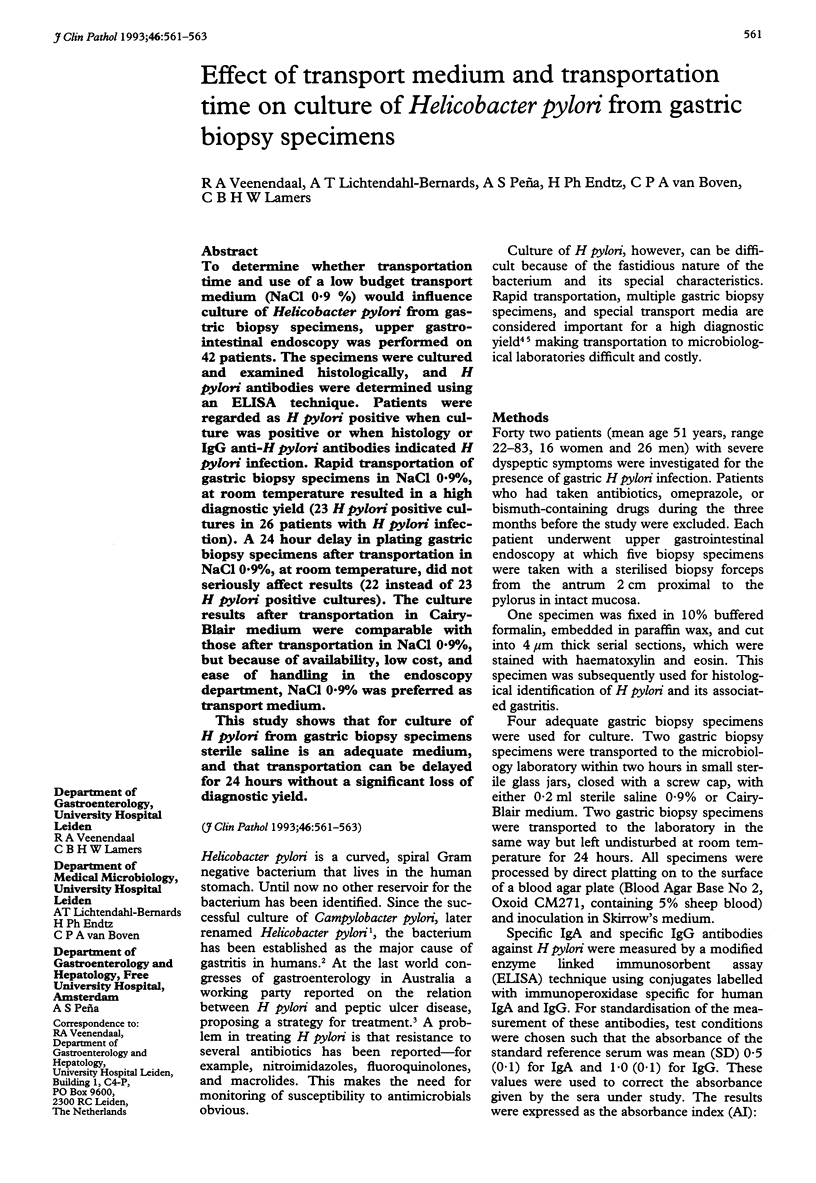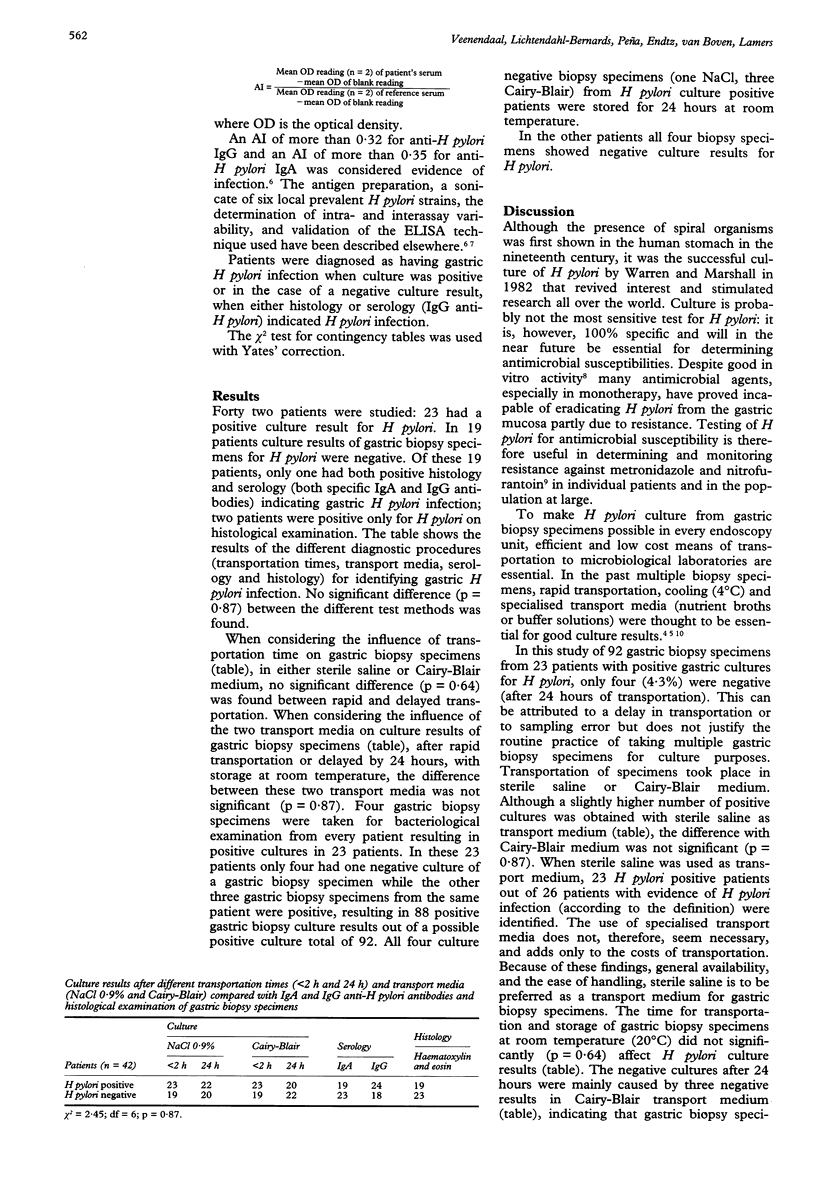Abstract
To determine whether transportation time and use of a low budget transport medium (NaCl 0.9%) would influence culture of Helicobacter pylori from gastric biopsy specimens, upper gastrointestinal endoscopy was performed on 42 patients. The specimens were cultured and examined histologically, and H pylori antibodies were determined using an ELISA technique. Patients were regarded as H pylori positive when culture was positive or when histology or IgG anti-H pylori antibodies indicated H pylori infection. Rapid transportation of gastric biopsy specimens in NaCl 0.9%, at room temperature resulted in a high diagnostic yield (23 H pylori positive cultures in 26 patients with H pylori infection). A 24 hour delay in plating gastric biopsy specimens after transportation in NaCl 0.9%, at room temperature, did not seriously affect results (22 instead of 23 H pylori positive cultures). The culture results after transportation in Cairy-Blair medium were comparable with those after transportation in NaCl 0.9%, but because of availability, low cost, and ease of handling in the endoscopy department, NaCl 0.9% was preferred as transport medium. This study shows that for culture of H pylori from gastric biopsy specimens sterile saline is an adequate medium, and that transportation can be delayed for 24 hours without a significant loss of diagnostic yield.
Full text
PDF


Selected References
These references are in PubMed. This may not be the complete list of references from this article.
- Blaser M. J. Helicobacter pylori and the pathogenesis of gastroduodenal inflammation. J Infect Dis. 1990 Apr;161(4):626–633. doi: 10.1093/infdis/161.4.626. [DOI] [PubMed] [Google Scholar]
- Deltenre M., Glupczynski Y., De Prez C., Nyst J. F., Burette A., Labbé M., Jonas C., DeKoster E. The reliability of urease tests, histology and culture in the diagnosis of Campylobacter pylori infection. Scand J Gastroenterol Suppl. 1989;160:19–24. doi: 10.3109/00365528909091730. [DOI] [PubMed] [Google Scholar]
- Goodwin C. S., Marshall B. J., Blincow E. D., Wilson D. H., Blackbourn S., Phillips M. Prevention of nitroimidazole resistance in Campylobacter pylori by coadministration of colloidal bismuth subcitrate: clinical and in vitro studies. J Clin Pathol. 1988 Feb;41(2):207–210. doi: 10.1136/jcp.41.2.207. [DOI] [PMC free article] [PubMed] [Google Scholar]
- McNulty C. A., Dent J. C. Susceptibility of clinical isolates of Campylobacter pylori to twenty-one antimicrobial agents. Eur J Clin Microbiol Infect Dis. 1988 Aug;7(4):566–569. doi: 10.1007/BF01962617. [DOI] [PubMed] [Google Scholar]
- Peña A. S., Endtz H. P., Offerhaus G. J., Hoogenboom-Verdegaal A., van Duijn W., de Vargas N., den Hartog G., Kreuning J., van der Reyden J., Mouton R. P. Value of serology (ELISA and immunoblotting) for the diagnosis of Campylobacter pylori infection. Digestion. 1989;44(3):131–141. doi: 10.1159/000199902. [DOI] [PubMed] [Google Scholar]
- Veenendaal R. A., Peña A. S., Meijer J. L., Endtz H. P., van der Est M. M., van Duijn W., Eulderink F., Kreuning J., Lamers C. B. Long term serological surveillance after treatment of Helicobacter pylori infection. Gut. 1991 Nov;32(11):1291–1294. doi: 10.1136/gut.32.11.1291. [DOI] [PMC free article] [PubMed] [Google Scholar]


